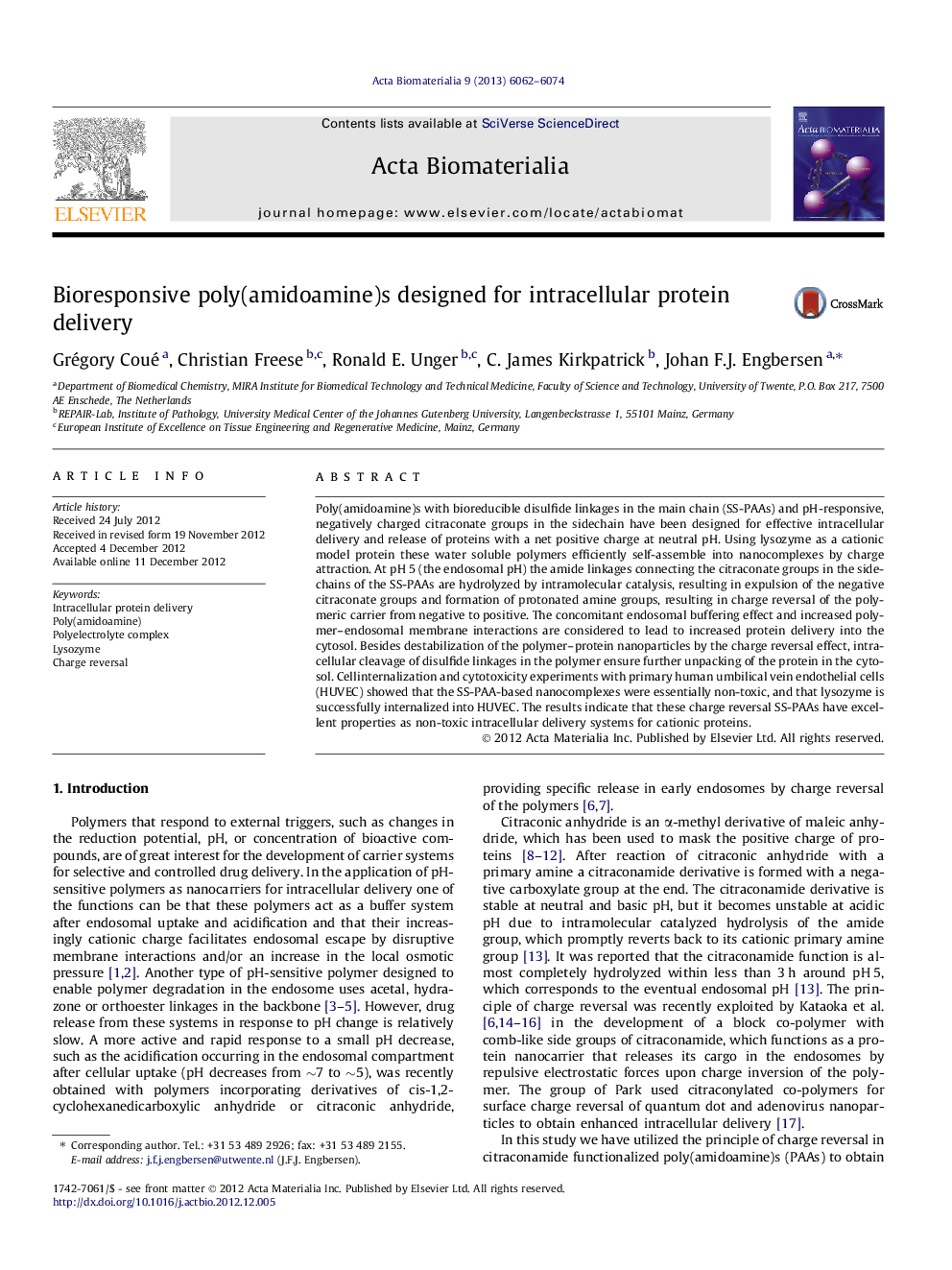| Article ID | Journal | Published Year | Pages | File Type |
|---|---|---|---|---|
| 10159852 | Acta Biomaterialia | 2013 | 13 Pages |
Abstract
Poly(amidoamine)s with bioreducible disulfide linkages in the main chain (SS-PAAs) and pH-responsive, negatively charged citraconate groups in the sidechain have been designed for effective intracellular delivery and release of proteins with a net positive charge at neutral pH. Using lysozyme as a cationic model protein these water soluble polymers efficiently self-assemble into nanocomplexes by charge attraction. At pHÂ 5 (the endosomal pH) the amide linkages connecting the citraconate groups in the sidechains of the SS-PAAs are hydrolyzed by intramolecular catalysis, resulting in expulsion of the negative citraconate groups and formation of protonated amine groups, resulting in charge reversal of the polymeric carrier from negative to positive. The concomitant endosomal buffering effect and increased polymer-endosomal membrane interactions are considered to lead to increased protein delivery into the cytosol. Besides destabilization of the polymer-protein nanoparticles by the charge reversal effect, intracellular cleavage of disulfide linkages in the polymer ensure further unpacking of the protein in the cytosol. Cellinternalization and cytotoxicity experiments with primary human umbilical vein endothelial cells (HUVEC) showed that the SS-PAA-based nanocomplexes were essentially non-toxic, and that lysozyme is successfully internalized into HUVEC. The results indicate that these charge reversal SS-PAAs have excellent properties as non-toxic intracellular delivery systems for cationic proteins.
Keywords
Related Topics
Physical Sciences and Engineering
Chemical Engineering
Bioengineering
Authors
Grégory Coué, Christian Freese, Ronald E. Unger, C. James Kirkpatrick, Johan F.J. Engbersen,
